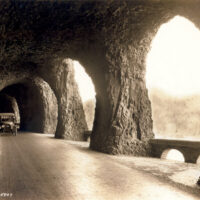
Observing Table
Gas Piston Event
Waiting for Episode 36
It was going to be Sunday.
Regular checking of the tiltmeter data, watching the glow and spatter in the livestream cameras, and nearly a year of experience with the current eruption’s repetitive episodes had allowed me to be fairly certain. Others were betting it would be Friday or Saturday. Some folks had been camping out on the volcano for days. I was sure… Sunday, probably Sunday morning.
Thus I readied the camera gear, made sure the car was fully fueled, and got to bed early Saturday evening for an early morning run.
Continue reading “Waiting for Episode 36”Nicaraguan Hill Country
Bubbling Caldron

Lava Fountain

Into the Kaʻū Desert
Back in January I missed the eruptive cycle, spending several days in the park doing some trails I had always meant to hike. No lava needed to have a good day in the park, I went for a hike.
Hiking in the Kaʻū desert had long been on my togo list, and I did it. And now, many months later I finally edited the imagery I took that day into a short video…
The Mitchell Point Tunnel
I do not recall when I first discovered the Mitchell Point Tunnel in period photographs, I would have been quite young. I do recall thinking that it was one of the coolest roads I had ever seen. A road tunnel cut just inside the face of a cliff with wide windows open to the sunlight.
The old postcard photos show a fascinating scene, a tunnel large enough for the cars of the early 20th century to pass one another on a smooth roadway. Big openings with heavy stone pillars separating them holding up the tunnel roof. The scenery would have been lovely, with views of the Columbia River well below.
The Columbia River Highway features prominently in my childhood memories. I grew up in the Portland area, and for many years my grandparents lived near The Dalles, as a result our family often traversed the area.
As the line from the old song stated “Over the river and through the woods, to grandmother’s house we go,” we went. For us the river was the Columbia, and the woods were the thick forests of the Columbia River Gorge.
Continue reading “The Mitchell Point Tunnel”Salmon Roast






